Egg painting is one of the oldest and most important Easter traditions in Romania. While the tradition is common to all Central and Eastern European countries, the custom of decorating the Easter eggs with complicated folkloric motifs is more specific to Romania, especially to the region of Bucovina, where it became an art in its own right. True gems come out of these people’s hands, whose craftsmanship made Romanian Easter eggs famous all over the world.
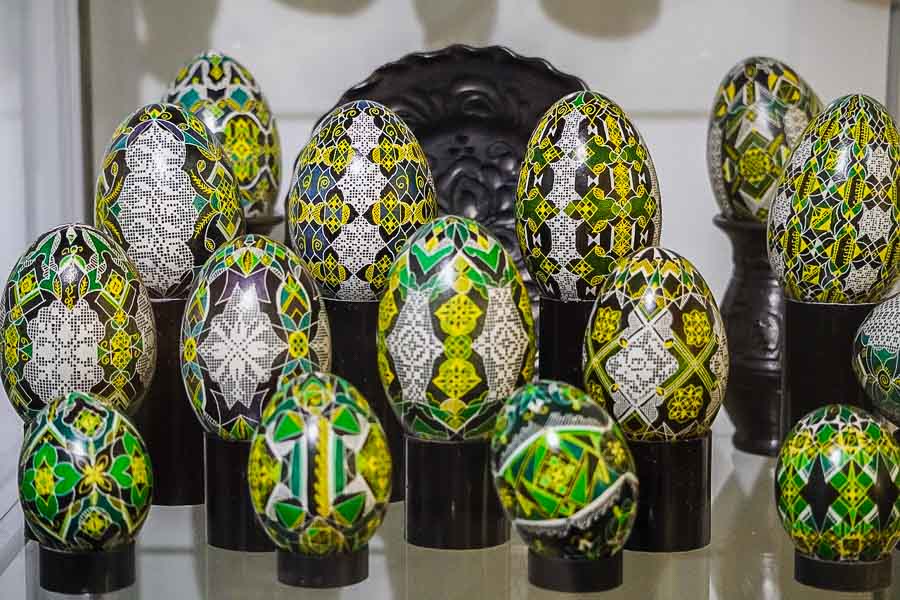
Throughout the years, Bucovina has became the home of painted eggs – a territory where this art has been sacredly preserved and passed down from generation to generation. I don’t think there is a single tourist who visited Bucovina and has not bought at least one painted egg as a souvenir from Romania.
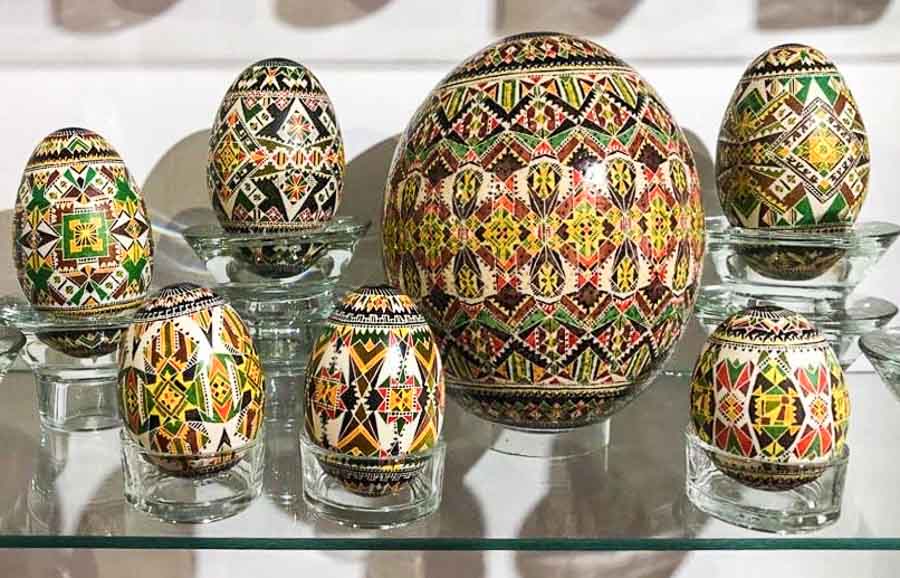
Table of Contents
The Art of Easter Egg Painting in Romania
Egg painting is a meticulous job that takes skill and patience. The decorative motifs can be very diverse, mixing astral symbols with vegetal and animal representations and traditional elements from the rural life.
There are two different techniques of decorating Easter eggs in Romania: by using paint and a brush, or by using wax. The latter technique is also known as “încondeiere.” Both practices achieve equally spectacular results.
The chromatic palette which may differ from region to region, incorporates a series of basic colors, like yellow, red, blue, black and white.
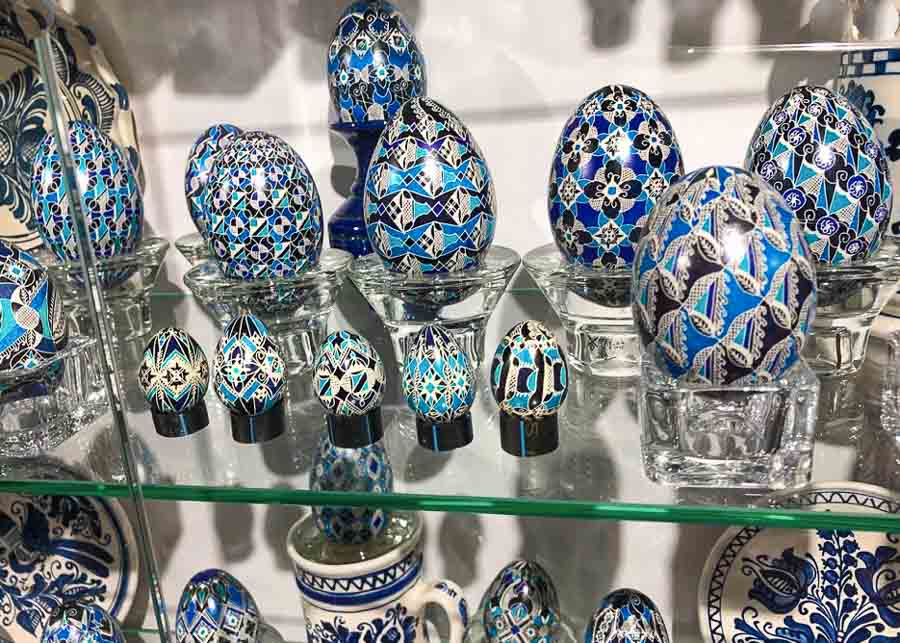
The most beautiful and suggestive inked eggs are those coming from the Hutsuls, an ethno-cultural group of Ukrainians who have inhabited the northern regions of Romania for centuries. This group of population is unanimously acknowledged for their craft of decorating beautiful Easter eggs, which became emblematic of them.
The Eggs Museum Lucia Condrea, in Moldovita
One of the best known Romanian artists in the field of egg painting with wax is Lucia Condrea, member of the National Union of Plastic Artists in Romania. Lucia, who comes from an old family of Hutsuls, learned this craft from her paternal grandmother. She exposes her “ovoid jewels” in exhibitions all around the world, and even has her own Eggs Museum in Moldovita.
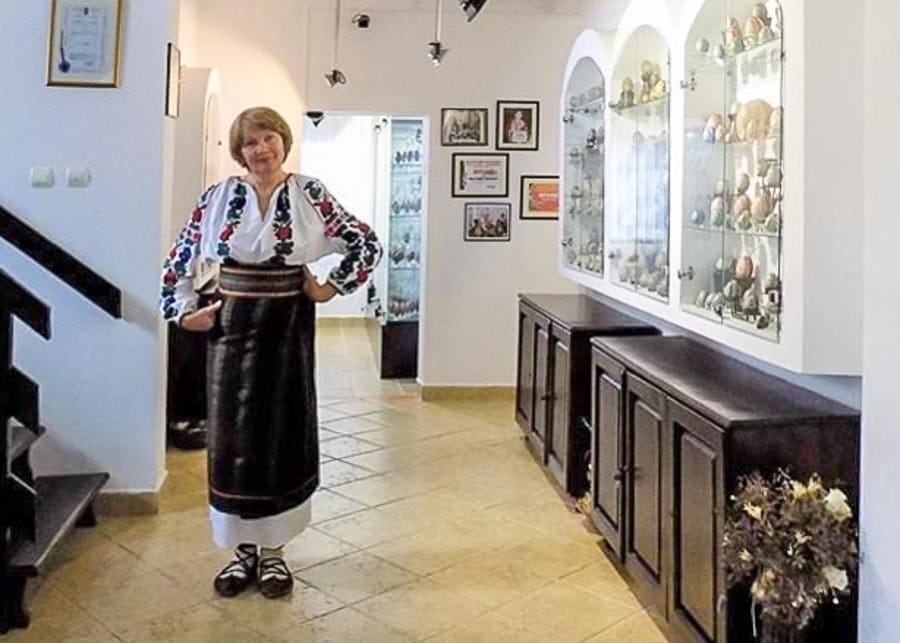
The Eggs Museum Lucia Condrea is one of the most unique places to visit in Romania. The museum was founded in 1993 at the initiative of the artist and includes a large collection of eggs, most of which are her own creations. The eggs – which vary in design, size and symbolism – have an immense artistic value and are absolutely unique.
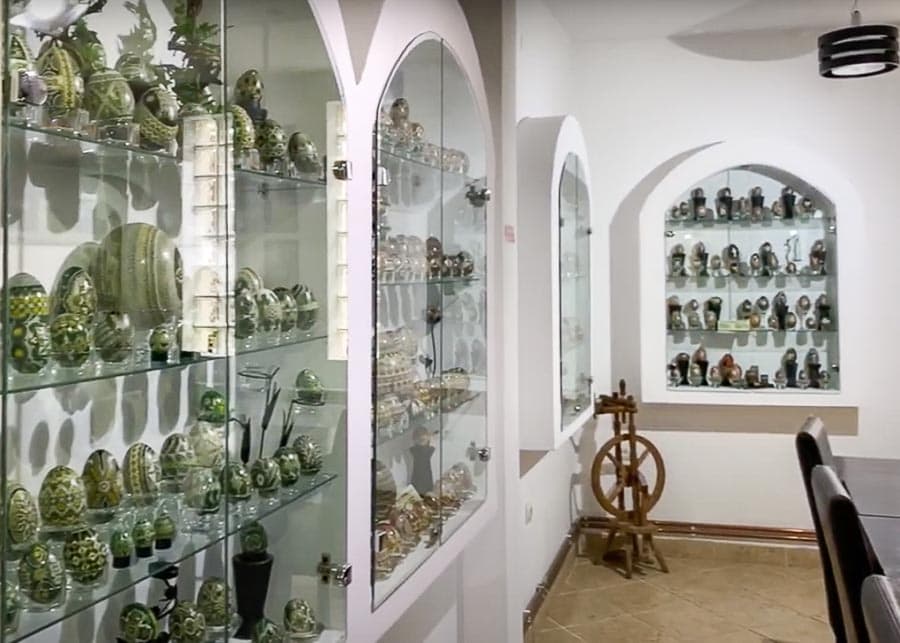
Situated in one of the most beautiful villages in Bucovina, the museum occupies two levels of the artist’s home and stretches over a surface of 600 square meters. There are 116 glass cases containing almost 15,000 exhibits.
Note: there is a 3-D virtual tour on the museum website which is interesting to watch.
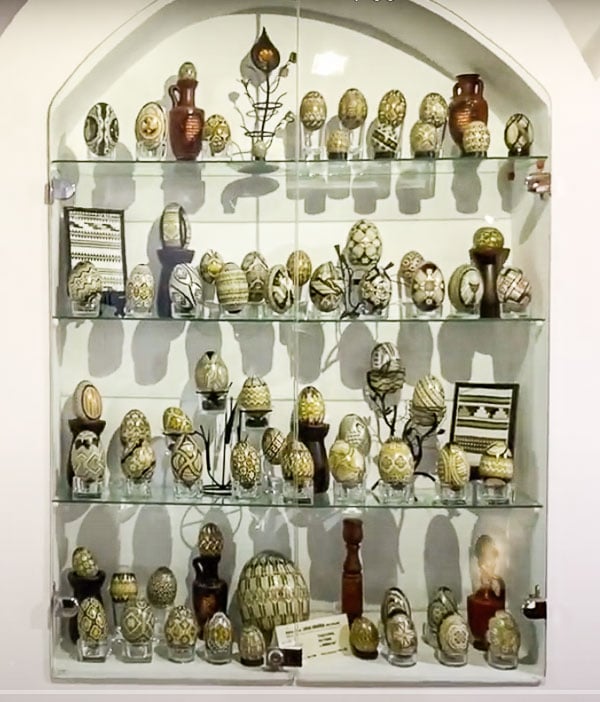
In addition to the artist’s creations, the Eggs Museum Lucia Condrea also includes two other collections. One of old painted eggs from the Hutsul villages around, and an international collection.
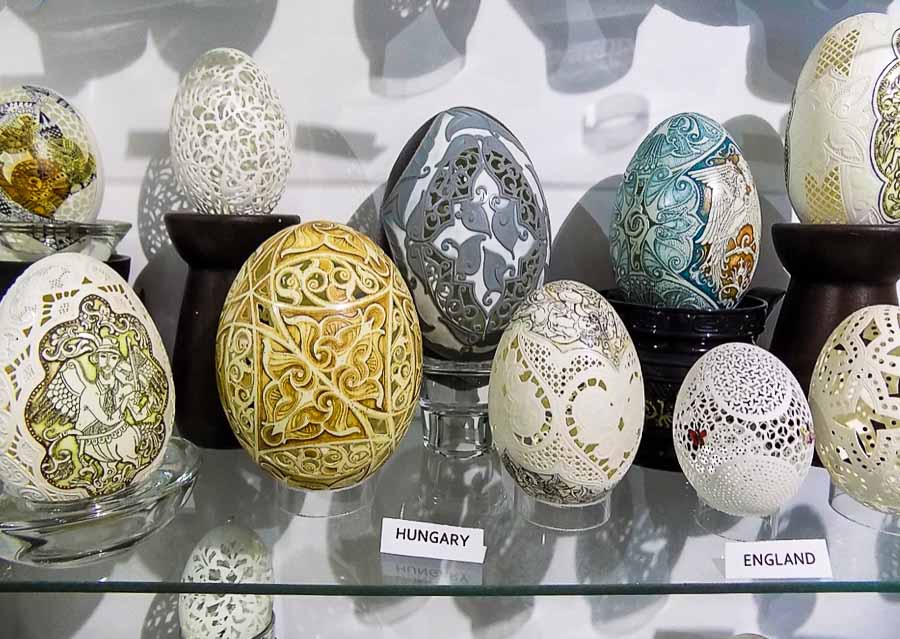
Looking at the amazing exhibits you realize it takes more than talent and hard work to get to this level of art. The intricate designs and poetic names of Lucia’s creations reveal a vivid imagination: Tears of Joy, Parallel Worlds, Between Dream and Reality, Our Daily Bread, the Lost Path.
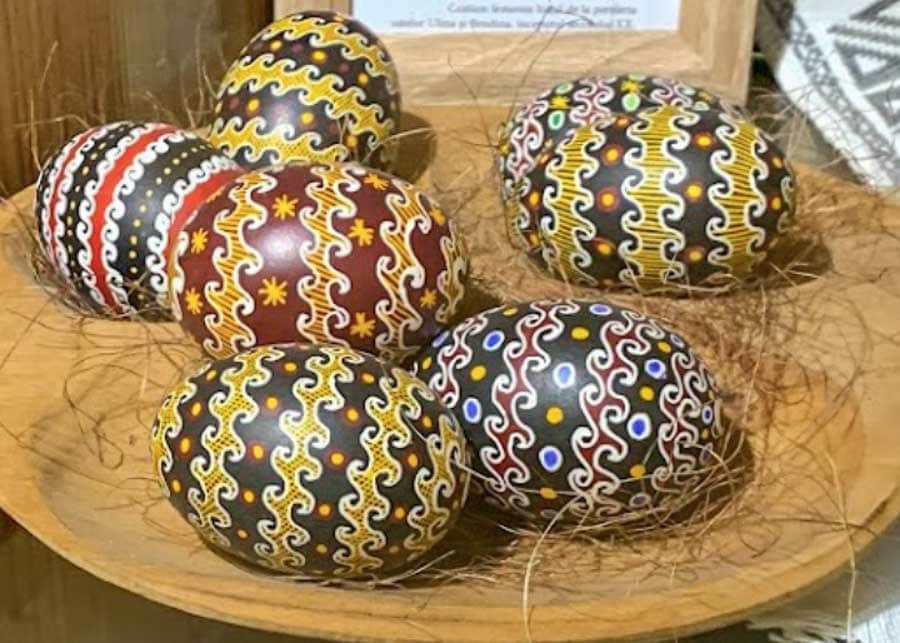
Her patterns include a whole area of elements which vary from traditional Romanian patterns and religious symbols to geometrical, astral, and zoomorphic motifs. Each egg has its own unique design, incorporating delicacy, refinement, and imagination.
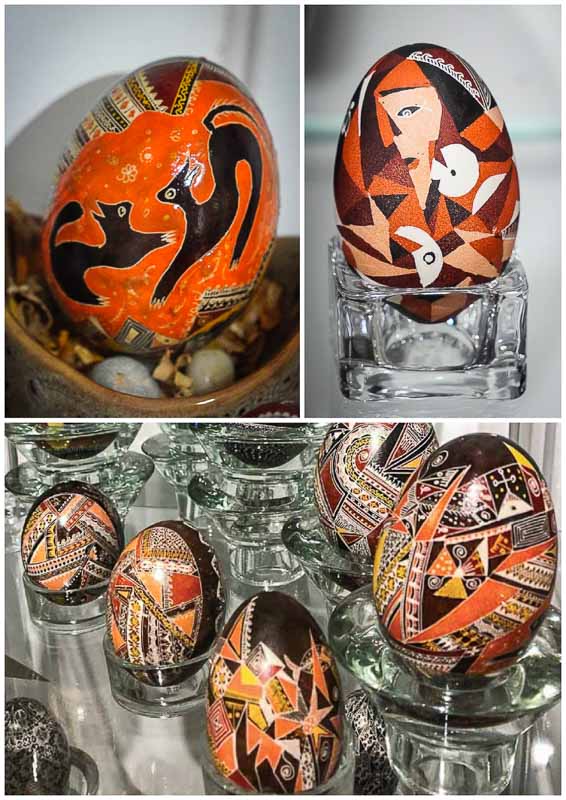
Egg Painting Techniques
Lucia Condrea’s painting technique is very interesting to watch. First she carefully chooses her eggs. For ensuring the final result many aspects of the egg are important. Like the strength of the shell, or the size of the egg. Then she drains the egg’s content so what remains is just the fragile exterior.
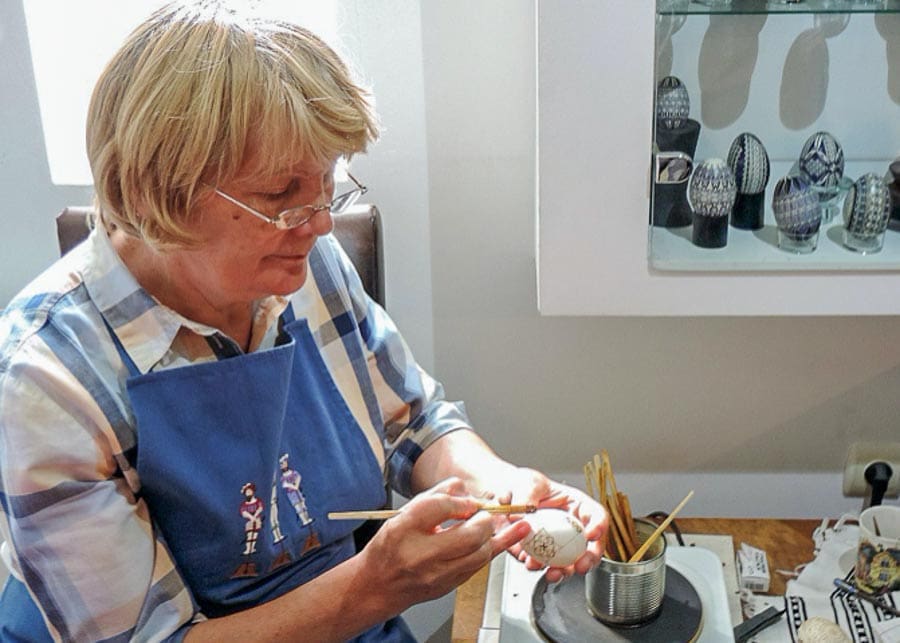
The ovoid shape of the egg requires a compositional conception that is often difficult to accomplish. So she divides the surface of the egg shell in four sections by drawing two axles.
The drawing technique starts by covering the egg surface in wax. Then she makes the design using a special tool – called “chisita” – which is made of a thin metal that attaches to a flat stick.
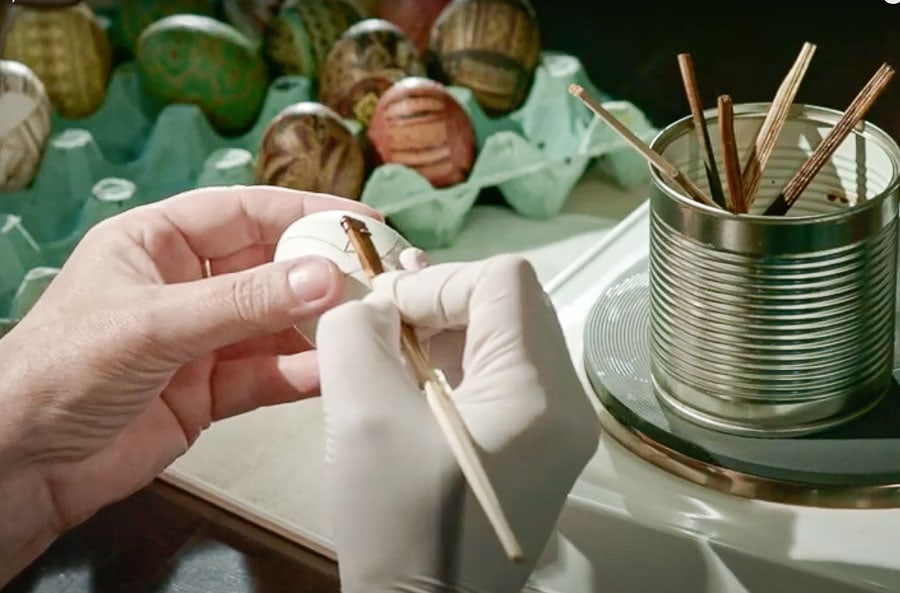
After finishing the first pattern, she dips the egg into a light color – usually yellow. Then she puts it into the melted wax to cover the dye mark. The wax has the role of sealing the dye. As a result, the artist can subsequently dip the egg in several other colors, without them running into each other. With each dipping more and more ornamental lines appear.
The last color she applies is black. In the end, she gently heats the egg to melt down the wax. The egg finally reveals its whole decorative beauty.
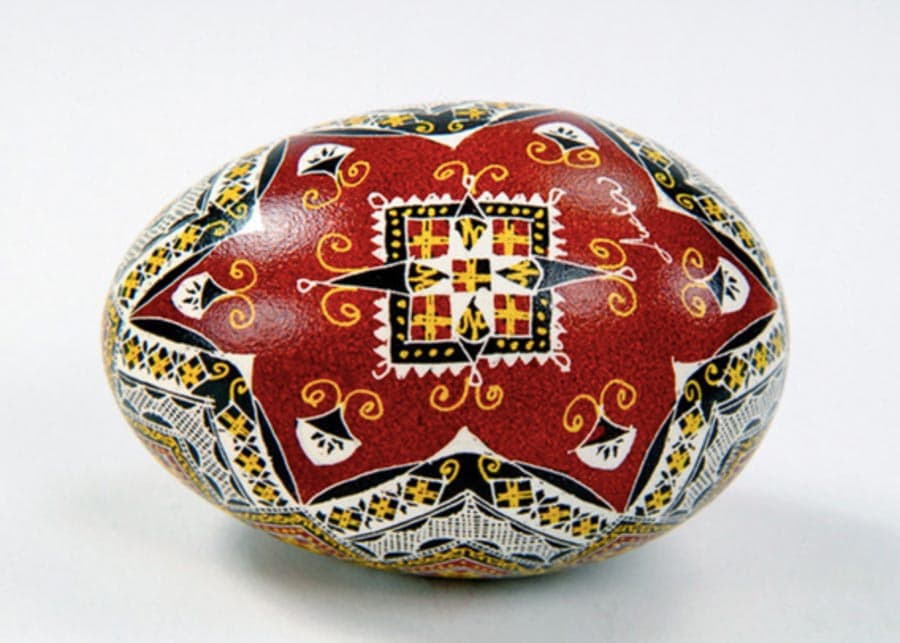
The artist uses her own inking techniques, which derive from the traditional batik method. Her results are astounding! Although similar in style, the eggs she paints are actually very different in quality from the Romanian Easter eggs you’ll find in the stores.
Easter Eggs Origin, Symbolism and Traditions in Romania
Eggs are as much a part of the Easter holiday as the roasted lamb or the Sunday service. But before their association with Easter, painted eggs were part of a Pagan tradition related to the rituals of spring.
From a Christian perspective, the Easter egg is a symbol of Jesus Christ’s resurrection after his crucifixion. Therefore, decorating the Easter eggs became a beloved tradition in the Orthodox and Eastern Catholic Churches in Romania, where red paint represents the blood of Jesus Christ that was shed on the cross.
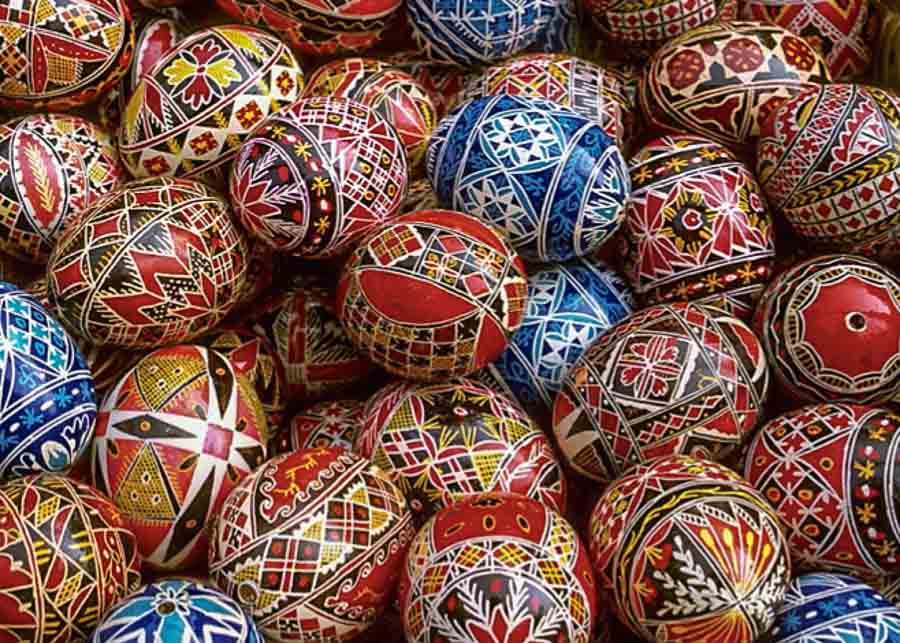
Decorated hard-boiled eggs are always present on the table during the Easter holiday. Romanians love eating them and can hardly wait to “knock” eggs on the first day of Easter, affirming to each other that “Christ is risen!” And the traditional response they receive is: “He is risen indeed!”
YOU MAY ALSO LIKE:
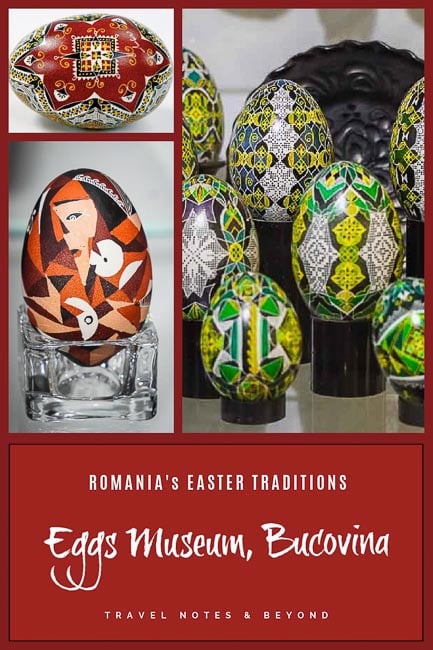

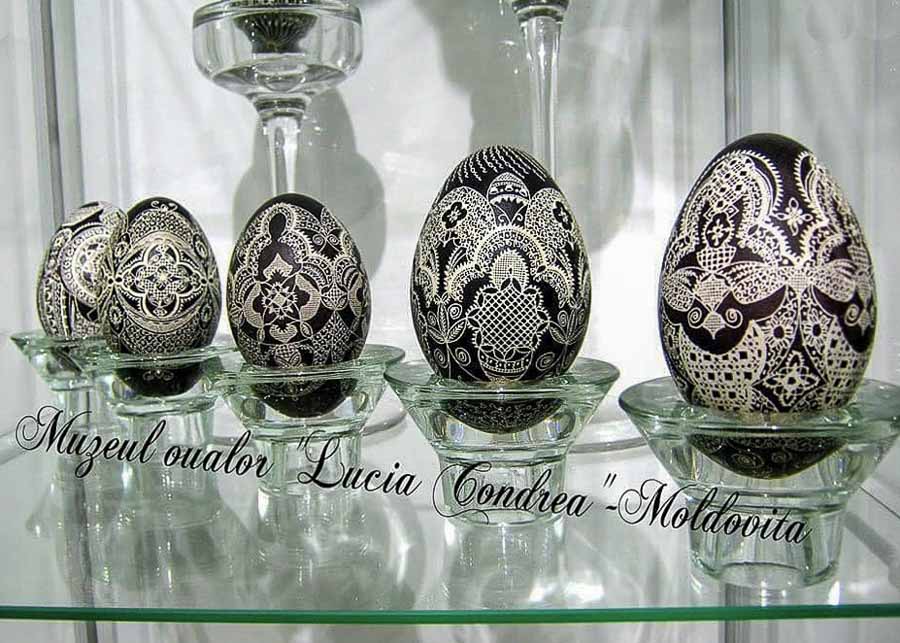
 15 Unique Churches in Romania That Everybody Enjoys Visiting
15 Unique Churches in Romania That Everybody Enjoys Visiting



saurabh
I have been to numerous museums during my travels but never came across eggs museum. This is something I would be totally interested in. The museum looks impressive. Nicely detailed!
Anda
If you ever travel to Bucovina in Romania, you’ll see a couple of such egg museums.
Trisha Velarmino
What a painstaking but beautiful craft! I’ve never heard of Moldovita until this post. It’s interesting to know that some artists have derived the painting style from traditional batik methods.
Paul Healy
The work in this eggs is extraordinary, such intricate details. It’s easy to see her passion for this craft, considering the amount of work she puts into it. I admire people who have that kind of patience.
Anda
Yea, me too, Paul
Linda (LD Holland)
I always associate painted eggs with the Romanovs in Russia. So fascinating to know that the Egg Museum in Romania has such a beautiful collection of painted eggs. I generally do not collect souvenirs when we travel. But a painted egg might make it home with me! Fascinating to read about the technique used.
Anda
It’s true that the Romanoffs had a weakness for painted eggs, but the bulk of their collection was made of Fabergé eggs, which are extremely expensive. These eggs from Bucovina are extremely beautiful, but not even by far expensive, which makes them great souvenirs.
Agnes
It is a pity that I did not know about this museum during my trip around Romania. What a fascinating place. These eggs are real works of art, with such precise decorations and colors. It’s great to know that Bucovina has become the home of painted eggs, where this art has been sacredly preserved and passed down from generation to generation. For sure egg painting is a meticulous job that takes skill and patience. I add this place to my itinerary for my next trip to Romania.
Subhashish Roy
Had no prior idea of this tradition of Romania. It was so interesting to understand how the paintings are done. The Eggs Museum in Moldovita would certainly be so interesting to visit being an Art lover.
Raksha
Wow that is absolutely amazing and cute. The paintings on egg shells, what a wonderful idea! Unfortunately I did not visit this museum when I was in Romania. I wish I had known, I would have definitely visited it. Such a unique museum and I am adding to my list for my next visit.
Anda
Maybe next time, Raksha.
Natascha
Wonderful pictures of the Easter Egg museum in Romania! I love the abstractly painted eggs. It is fascinating how much skill and time go into decorating them.
Sophia Bawany
The detail and time that is put in to creating these works of art!!! And the process of sealing each color with wax, you can tell these craftsmen and craftswomen truly love their art. Now I want a decorated egg!
Anda
Hahaha, you’ll have to go to Romania to buy one like that.